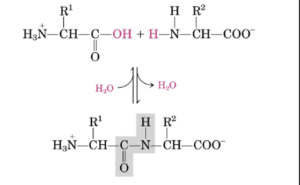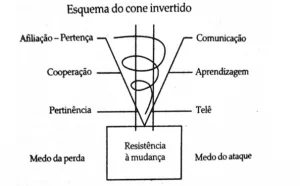ORIGINAL ARTICLE
RIBEIRO, Thayanne Mayul de Souza Borges [1]
RIBEIRO, Thayanne Mayul de Souza Borges. The psychologist in the hospital environment: cognitive-behavioral techniques to reduce stress and anxiety. Revista Científica Multidisciplinar Núcleo do Conhecimento. Year 05, Ed. 08, Vol. 06, p. 05-14. August 2020. ISSN: 2448-0959, Access link: https://www.nucleodoconhecimento.com.br/psychology/stress-and-anxiety
ABSTRACT
This article aims to expose some of the main techniques based on Cognitive-Behavioral Therapy. The objective is to present practices to deal with and even reduce stress and anxiety within the hospital context. Interventions show practices such as diaphragmatic breathing, relaxation techniques, stress management training, recording dysfunctional thoughts that promote cognitive restructuring. A survey of national and international journals was carried out on the techniques used and the consequences of stress and anxiety. The way the subject relates, interprets and gives meaning and meaning to facts and stressful situations, especially in the hospital environment. Therefore, the psychologist is the professional responsible for facilitating the understanding of the health and disease process. In addition to providing emotional support to the multidisciplinary team, patients and their companions. Since Cognitive-Behavioral Therapy can be considered as a self-therapy that provides physical and psychological well-being.
Keywords: stress, anxiety, hospital environment, cognitive-behavioral techniques.
1. INTRODUCTION
Currently, stress and anxiety have become a worldwide phenomenon, according to Ganster and Rosen (2013) mentioned by Ferreira et al. (2016). An experience that is lived for a long time can generate changes that can affect physical, mental and emotional health.
In this perspective, some professionals who make up the multidisciplinary team consider the tasks performed within the hospital space stressful. Professionals are in frequent contact with patients with different pathologies. The risk of contamination increases when coming into contact with those who have undergone invasive procedures (MATURANA and VALLE, 2014).
Thus, this article aims to identify, in general, some techniques based on Cognitive-Behavioral Therapy. Among these interventions are: diaphragmatic breathing; relaxation techniques; stress management training; record of dysfunctional thoughts that enable cognitive restructuring. Transformations in the way of thinking and, later, of behaving in the face of situations (MARQUES and DELFINO, 2016). The following questions that guided this work: How can techniques based on Cognitive-Behavioral Therapy help to reduce stress and anxiety in the hospital environment? Can the use of these practices lead to physical and psychological well-being?
A literature review was carried out through a survey, with a qualitative approach, of the publication of national and international articles on the subject. Existing in the Scielo and Google academic database. The main researchers studied for the preparation of this material were Gazzaniga and Heatherton (2005), Marques and Delfino (2016), Adriano et al. (2017), Lima; Silva and Souza (2019), Mandato (2019), Yokoyama (2019), among others.
This topic is relevant, as time in the hospital environment can be decisive. And that requires the use of more brief and directive techniques. Because, they enable the subject to deal with stressful situations, arising from the routine and conditions imposed by the context in which he finds himself (PERON and SARTES, 2015).
2. EMOTIONS ANXIETY AND STRESS
Emotions give meaning and meaning to human experience. They warn about danger, form affective bonds between individuals. However, they can cause some problems. A very anxious person can be paralyzed by a new situation (GAZZANIGA and HEATHERTON, 2005).
According to Gazzaniga and Heatherton (2005) psychological experts believe that emotions are quick and automatic responses to environmental events and are directly linked to feelings. The authors still differentiate emotion from humor. It reflects the diverse and permanent emotional states that exert a negative or positive influence on a person’s thinking and behavior. Considered as a pattern of behavioral and physiological responses that extrapolate the body’s capabilities.
How stressed a person feels is determined by several aspects: the way they perceive the stressful condition and subjective beliefs about the internal resources they have to act in the face of the stressful event. A threatening stimulus from the environment in which it is inserted that requires an immediate response in order to reduce or even flee from the stimulus seen as threatening (GAZZANIGA and HEATHERTON, 2005).
From an evolutionary perspective, anxiety and stress originate in the body’s defense mechanism. When faced with a dangerous situation, there is a set of behavioral and neurovegetative responses that correspond to the fear reaction (MARGIS et al., 2003). The neurovegetative nervous system corresponds to the system that involves all the nerves and nerve centers that control the viscera and glands of the body. Participating in all the functions of the organism (SOBRINHO, 2003). Anxiety can be seen as an unconscious response to stress. However, the causative agent of stress is not known (BACHION et al., 1998)
All people experience some level of anxiety on a daily basis. A feeling that something is about to happen. But the subject cannot identify the cause of danger, cannot identify the object of threat. During the adaptive stage, anxiety lessens the state of tension. And there are different degrees of the mildest that make the individual more physically and mentally aware. To the highest degree where you feel paralyzed. Making it unproductive and this state can become chronic and lead to the emergence of diseases (BACHION et al., 1998).
According to Adriano et al. (2017) stress has physical, physiological and emotional components. A behavior that the organism presents in the face of a circumstance that can be interpreted in a negative or positive way. The latter takes place in the initial stage known as the alert phase. The subject manages to dodge and escape situations seen as threatening. However, if the stressful situation persists for a long time, the person begins to feel extremely tired.
The later stage is that of semi-exhaustion, the tension goes beyond the limit of what is possible to control. Exhaustion is the most negative period. There is an internal imbalance and the individual feels incapable of making decisions, concentrating on daily tasks. Pathologies begin to appear after a decrease in the body’s physical and emotional resistance. (ADRIANO et al., 2017)
According to Metring (2011) the Autonomic Nervous System (ANS) is formed by two divisions: the Parasympathetic (P) and Sympathetic (S) systems, whose opposite functions allow homeostasis, the balance of the biological system even in situations of constant changes in the environment. The parasympathetic system acts more conservatively, while the sympathetic system prepares the body to respond immediately to circumstances considered stressful.
Gazzaniga and Heatherton (2005) mention the term fight-or-flight response created by psychologist Walter Cannon, from Harvard, to describe the physical reactions of animals in the face of an attack. The spleen contracts and the heart rate increases, redistributing blood from the skin and viscera to the musculature and brain. Breathing becomes labored, and the pupils of the eyes dilate. The liver releases a huge amount of glucose into the body. And this ends up releasing a lot of energy. Everything happens in seconds and makes it possible to direct all energy to face the threat.
Ganster and Rosen (2013) cited by Ferreira et al. (2016) emphasizes that stress in the work environment has become a worldwide phenomenon, and in the long term it can generate changes that affect the physical, mental and emotional health of professionals.
Some healthcare professionals may consider the tasks performed in the hospital to be stressful. An organization with a hierarchical structure, strict operating rules, in which the worker is in constant contact with patients who have the most diverse diseases (STEKEL, 2011). A place where risk of contamination is frequent, requiring greater attention on the part of the worker. Mainly, when they are in contact with those who performed invasive procedures (MATURANA and VALLE, 2014).
3. THE ROLE OF THE PSYCHOLOGIST IN THE HOSPITAL SPACE
The health field requires an immediate response from workers on a daily basis so that the assistance given to patients makes it possible to minimize the consequences. Essentially, with regard to the negligence of conduct, to avoid errors and exposure to aggravating situations. Associated with the complexity of the activities carried out, the degree of commitment and the responsibilities imposed by this type of care that requires permanent contact with the suffering of others. This further increases the anxiety and stress of patients, their companions and the multidisciplinary health teams that work within this context (ADRIANO et al., 2017).
In this perspective, Hospital Psychology can be seen as a field with multiple possibilities of action (ALMEIDA and MALAGRIS, 2011). In the most diverse sectors, from the outpatient clinic to the Intensive Care Units (ICU). In the wards, he integrates the teams responsible for palliative care, especially for those who are at the end of life. The psychologist in the hospital environment works in an interdisciplinary way, in order to make the performance of multidisciplinary health teams more humanized (LIMA, SILVA and SOUZA, 2019).
The hospital psychologist mediates the relationship between the patient, his family and the health team. The professional responsible for giving voice to fragile people. Through a welcoming listening, in which it is possible to understand the fears and insecurity that hospitalization causes. And the use of interventional practices that make it possible to reduce stress levels, anxiety in the face of situations experienced (LIMA; SILVA and SOUZA, 2019).
The interest in acting in this field arises from the need to understand and reflect on health and illness from a psychosocial perspective and from individual and/or group intervention (ALMEIDA and MALAGRIS, 2011). In this context, the use of Cognitive Behavioral Therapy becomes very beneficial, as the hospital is an environment that requires the use of more directive techniques, a brief modality aimed at creating mechanisms that allow the subject to face the imposed illness and work condition (NEVES NETO, 2001 apud PERON and SARTES, 2015).
4. THE PSYCHOLOGIST IN THE HOSPITAL AND COGNITIVE-BEHAVIORAL INTERVENTIONS
The psychologist facilitates the understanding of the health and disease process, providing emotional support to health professionals, patients and their companions. However, time is a determining factor that delimits the psychologist’s performance within the hospital space and the issues to be worked on must be centered on the present (YOKOYAMA, 2019).
According to Judith Beck, Cognitive-Behavioral Therapy emerged in the early 1960s, by Aaron T. Beck, as brief and structured psychotherapy. Focused on the current moment in solving the problems that present themselves here and now, in the change of thoughts and dysfunctional behaviors (BECK, 1997).
Therefore, an educational psychotherapy centered on the present and on what motivated them to seek treatment. The methodology used is based on the cooperation between the psychotherapist and the client, in order to bring about the necessary changes to overcome current problems. The purposes established based on the questions presented allow the person to learn new strategies considered more functional (LIMA, 2013).
Programs to keep anxiety and stress under control began to be applied in the mid-1970s (MURTA, 2005). However, in Brazil, Cognitive-Behavioral Therapy (CBT) began to be developed in the late 1980s. Since then, its use has gradually increased, especially in recent years (PERON and SARTES, 2015). Cognitive-Behavioral Interventions are based on the subjective understanding of each individual through the triad of thoughts (the way he sees himself, the environment and projects the future), generated by him. It is observed that thoughts (beliefs) form emotions and these give rise to behavior (MARQUES and DELFINO, 2016).
Currently, according to Murta (2005), most strategies for reducing stress and anxiety are centered on the subject with multimodal interventions, of which cognitive-behavioral therapy has been gaining more and more prominence. The subject becomes aware of the causes and consequences of stress and anxiety.
Cognitive-behavioral interventions seek to diversify the use of techniques that allow the establishment of a healthier repertoire in the face of circumstances that trigger exacerbated anxiety and stress (MURTA, 2005). Some include practicing diaphragmatic breathing techniques, relaxation techniques, and stress training. In addition, records of dysfunctional thoughts, mindfulness and cognitive restructuring (MARQUES and DELFINO, 2016).
In diaphragmatic breathing, the person learns to inhale and exhale through the diaphragm. She is asked to place one hand on her abdomen and the other on her chest. Holding the breath in this way for approximately three minutes. It is possible to reduce anxiety by consciously focusing attention on the breathing process (MARQUES and DELFINO, 2016). Relaxation practices allow the person to achieve a state of mental and physical tranquility. The organism returns to a normal state through contraction and relaxation activities, working on body muscle tension (MANDATO, 2019).
The Training that aims to control Stress better known as (TCS) aims to propose a change in relation to the way of life and behaviors based on the four pillars that support the technique: cognitive and behavioral restructuring; physical activity practices; healthier nutrition; in addition to relaxation techniques that reduce physical and mental tension (BORGES et al., 2009). In mindfulness technique, the individual focuses on the current moment by recording emotions, thoughts and behaviors. It brings attention in a sustained way to each task performed or phenomenon experienced (MARQUES and DELFINO, 2016).
According to Mandato (2019) in dysfunctional thought records, the subject can verify the less adaptive thoughts that cause suffering. From cognitive restructuring, the individual learns to observe and identify dysfunctional thoughts, replacing them with more adaptive ones and, consequently, there is a change in behavior (LIMA; SILVA and SOUZA, 2019). Borges et al. (2009) emphasize that coping with stressful circumstances through the cognitive restructuring strategy reduces stress and anxiety levels.
Stekel (2011) states that through this therapy the subject becomes able to deal in a more functional way with these stressful stimuli from the moment he understands the environment in which he is inserted. Due to its educational character, Cognitive-Behavioral Therapy allows the client to perform self-therapy.
Given that it aims to teach the person some techniques that make it possible to prevent relapses and promote physical and mental well-being (MANDATO, 2019). It is intended to reduce the levels of stress and anxiety in the body. And, consequently, improve the quality of life of patients, their companions and the professionals who make up the multidisciplinary health team (LIMA; SILVA and SOUZA, 2019).
5. FINAL CONSIDERATIONS
Occupational activities can often be considered as a source of achievement. However, many times the person feels unable to deal with the pressures that the occupational routine imposes. Therefore, some healthcare professionals may feel exhausted while working. Because they perform a large amount of care on a daily basis and are in frequent contact with the most diverse types of pathologies. And that ends up increasing stress and anxiety. Therefore, attention must be paid to physical and mental health. Above all, due to the particularity of the tasks they perform.
It appears that the work of psychologists who use Cognitive-Behavioral Therapy in the hospital environment has grown considerably in recent decades. Focused on the current moment, this type of brief and structured psychotherapy has proved to be very beneficial from this perspective. The Cognitive-Behavioral approach combines cognitive and behavioral techniques.
The use of these practices makes it possible to develop the necessary skills so that the person can deal in the best way with the stressful stimuli present in the environment, especially the hospital. Thus, the article in question can be considered as a basis for further research to expand the discussion and understanding of this topic. Well, this therapy can significantly help reduce anxiety and stress.
6. REFERENCES
ADRIANO. M. S. P. F., et al. Estresse Ocupacional em Profissionais da Saúde que atuam no Serviço de Atendimento Móvel de Urgência de Cajazeiras – PB. Revista Brasileira de Ciências da Saúde, v. 21, n.1, p. 29-34, 2017. Disponível em:<https://periodicos.ufpb.br/index.php/rbcs/article/view/16924> Acesso em: 30 Abr.2020.
ALMEIDA, R.; MALAGRIS, LM. A prática da psicologia da saúde Revista Sociedade Brasileira de Psicologia Hospitalar v. 14, n.2, p.183-202, 2011. Disponível em: <http://pepsic.bvsalud.org/scielo.php?script=sci_arttext&pid=S1516-08582011000200012> Acesso em: 13 Mai. 2020.
BACHION M. M. et al. ESTRESSE, ANSIEDADE E COPING: Uma revisão dos conceitos, medidas e Estratégias de Intervenção Voltadas para Prática de Enfermagem. Revista Mineira de Enfermagem, v. 2, n.1, p. 33-39, 1998. Disponível em:<http://www.reme.org.br/artigo/detalhes/867> Acesso em: 22 Mai. 2020.
BECK J.S. Pontos a serem problematizados e discutidos: História da Terapia Cognitiva e os dez princípios da Terapia Cognitiva elencados por Judith Beck. Terapia Cognitiva: teoria e prática. Porto Alegre: Artmed, pp.17-25, 1997.
BORGES C., et al. Intervenção cognitivo-comportamental em estresse e dor crônica. Arquivos Ciências Saúde, v.16, n.4, p.181-186, 2009. <http://repositorio-racs.famerp.br/racs_ol/vol-16-4/IDK7_out-dez_2010.pdf> Acesso em: 09 Jun. 2020.
FERREIRA CA., et al. O contexto do estresse ocupacional dos trabalhadores da saúde: Estudo Bibliométrico. Revista de Gestão em Sistemas de Saúde. v.5, n.2, p. 84-99, 2016. Disponível em: <http://www.revistargss.org.br/ojs/index.php/rgss/article/view/233> Acesso em: 24 Mai.2020.
GAZZANIGA, M.; HEATHERTON, T. Emoções, Estresse e Coping. Maria Adriana Veronese (trad.). Ciência Psicológica Mente, Cérebro e Comportamento. 2. ed.Porto Alegre: Artmed, pp.312-341, 2005.
LIMA A. Terapias Cognitivo-Comportamentais. Técnicas Psicoterápicas/ Séries Concursos Públicos: Resumo de Psicologia. Salvador: Concursos PSI Empreendimentos Editoriais, pp.42-45, 2013.
LIMA, F. S; SILVA, A. C. P. da; SOUZA T. de O. Olhar Humanizado na Prática do Psicólogo no Ambiente Hospitalar. GEPNEWS, Maceió, a.3, v.2, n.2 pp.448-453, 2019.
MANDATO, T. Contribuições da Terapia Cognitivo-Comportamental no Tratamento da Síndrome de Burnout em Profissionais da Saúde. Trabalho de Conclusão (Especialização Terapia Cognitivo-Comportamental). Centro de Estudos em Terapia Cognitivo-Comportamental. São Paulo, 36 p. 2019.
MARGIS, R. et al. Relação entre estressores, estresse e ansiedade. Revista de Psiquiatria, v.25 (suplemento 1), p 65-74, 2003. Disponível em: <https://www.scielo.br/scielo.php?pid=S0101-81082003000400008&script=sci_abstract&tlng=pt >Acesso em: 28 Abr. 2020.
MARQUES L, DELFINO TE. Contribuições das Técnicas de Respiração, Relaxamentos e Mindfulness no manejo do estresse ocupacional. PSICOLOGIA. PT O Portal dos Psicólogos, 2016. <https://www.psicologia.pt/artigos/textos/A0965.pdf> Acesso em: 10 Mai. 2020.
MATURANA, AP.; VALLE, TG. Estratégias de Enfrentamento de Situações Estressoras de Profissionais no Ambiente Hospitalar. Revista Psicologia Hospitalar, v.12, n.2, pp.2-23, 2014. Disponível em: <http://pepsic.bvsalud.org/scielo.php?script=sci_arttext&pid=S1677-74092014000200002> Acesso em: 27 Abr. 2020.
METRING R. Como se organiza o Sistema Nervoso? Neuropsicologia e aprendizagem: fundamentos necessários para o planejamento do ensino. Rio de Janeiro: Wak, 110p.
MURTA, S. Programas de manejo de estresse ocupacional: uma revisão sistemática da literatura. Revista Brasileira de Terapia Comportamental, VII, n.2, p. 159-177, 2005. Disponível em: <http://pepsic.bvsalud.org/scielo.php?script=sci_arttext&pid=S1517-55452005000200003> Acesso em: 10 Mai. 2020.
PERON, N.; SARTES, L. Terapia cognitivo-comportamental no hospital geral: revisão da literatura brasileira. Revista Brasileira de Terapias Cognitivas, v. 11, n.1, p. 42-49, 2015. Disponível em: <http://pepsic.bvsalud.org/scielo.php?script=sci_arttext&pid=S1808-56872015000100006> Acesso em: 28 Mai. 2020.
SOBRINHO, J. Fisiologia do sistema nervoso neurovegetativo. Revista ACTA FISIÁTRICA, v. 10, n.3, p. 122-132, 2003. Disponível em: <http://www.revistas.usp.br/actafisiatrica/article/view/102458> Acesso em: 10 Jun. 2020.
STEKEL, L. Estresse e Coping entre auxiliares e técnicos de enfermagem de um hospital universitário. 2011.110f. Dissertação (Mestrado em Enfermagem). Universidade Federal de Santa Maria, Santa Maria, 2011.
YOKOYAMA, F. Aplicação da Terapia Cognitivo-Comportamental no Contexto Hospitalar. Trabalho de Conclusão (Especialização Terapia Cognitivo-Comportamental). Centro de Estudos em Terapia Cognitivo-Comportamental. São Paulo, 25 p. 2019.
[1] Specialization in Cognitive-Behavioral Therapy by the Brazilian Faculty of Research and Extension Teaching (FABEX). Postgraduate in Mental Health and Psychosocial Care from Universidade Estácio de Sá. Degree in Pedagogy Higher Institute of Education at Faculdade Fortium Brasília-DF.
Sent: July, 2020.
Approved: August, 2020.




